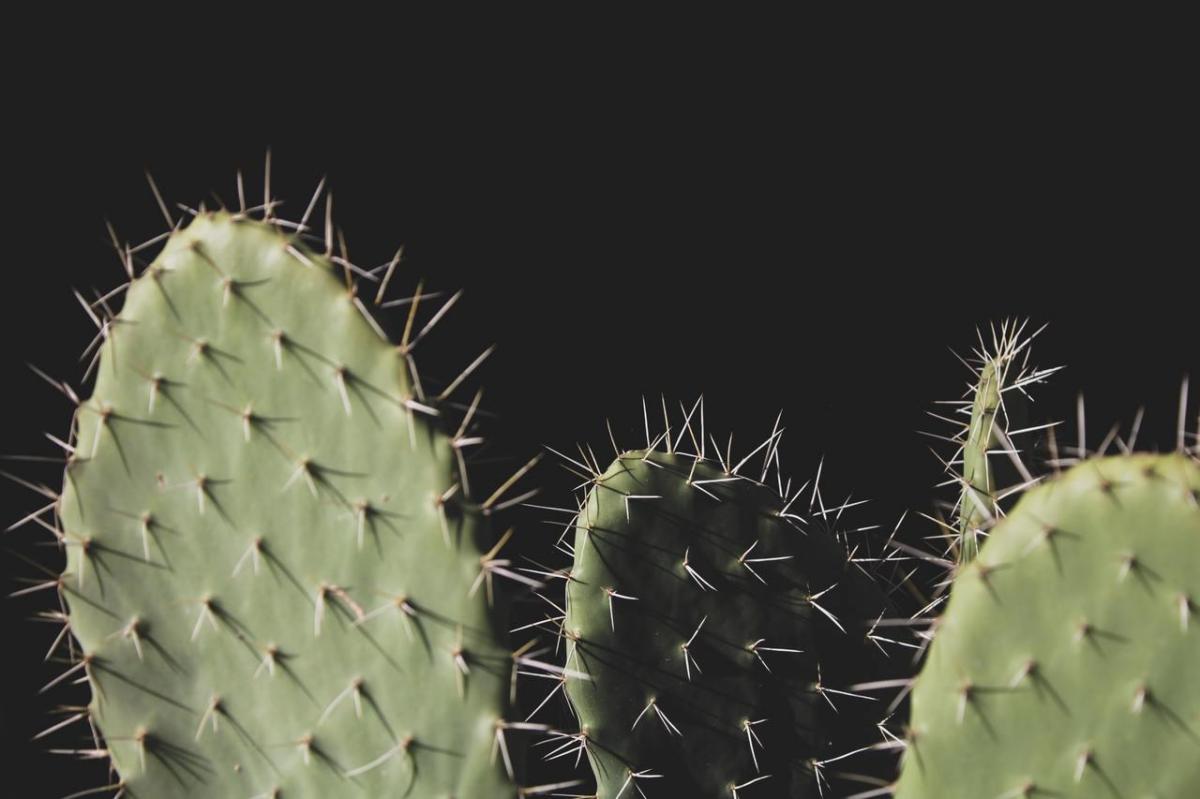
Cacti are known for how easy they are to care for, and also for the beauty of their flowers. There are many that, in addition, can be grown in pots or planters, which is undoubtedly very interesting when you want to have some on the balcony or in the patio, and / or you do not have a garden.
But no matter how well cared for, there are a number of insects that can destroy our collection in no time, unless we put a stop to them. So Let's see what are the pests of cacti and how to eliminate them.
Red spider
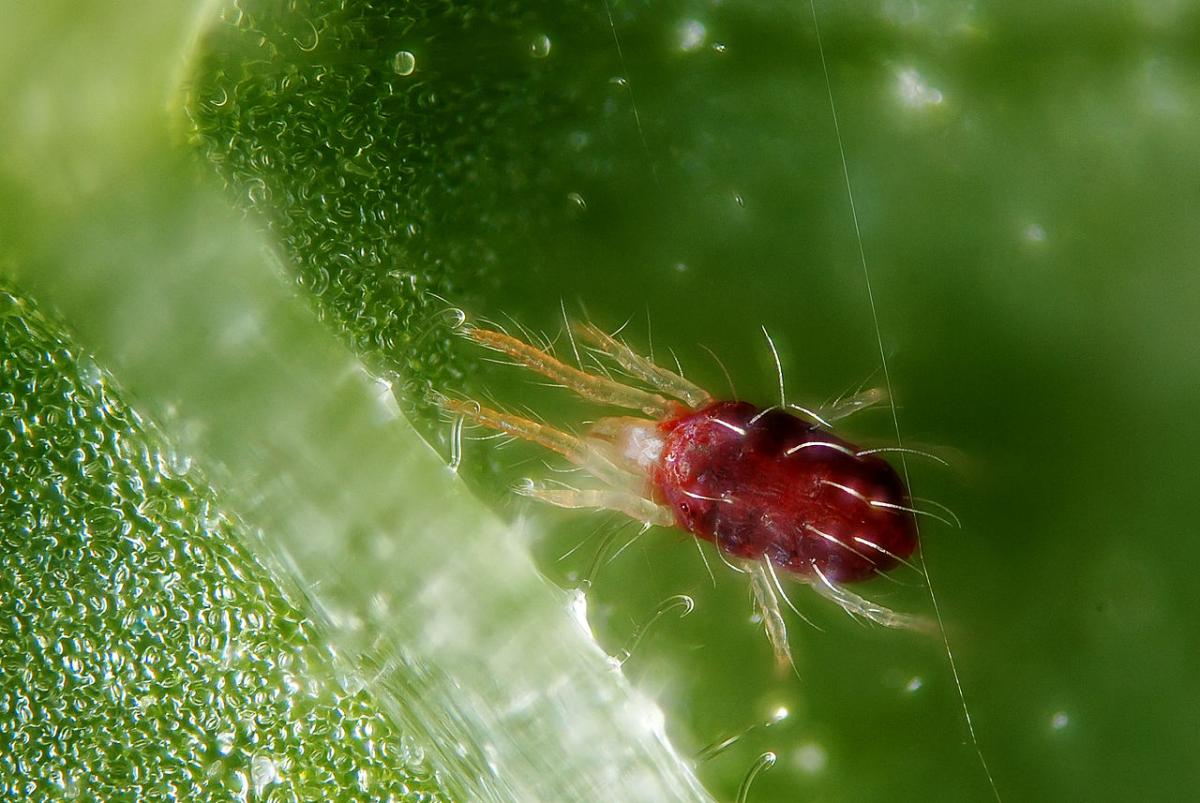
Image - Wikimedia / Gilles San Martin
La Red spider It is an insect that affects many types of plants, including cacti. Despite its name, It is a mite that has an oval body, orange if it is female or yellowish if it is male.
It proliferates in spring and summer, feeding on the sap. It is easy to distinguish it as it produces silk threads to pass from one side to the other.
Damage
When a cactus has a spider mite infestation, what will happen to it is that your body will begin to show discolorations.
Transmission
If you want to eliminate or reduce the plant, we advise cleaning the cactus with water first. If the plague is not widespread, this remedy is often more than enough. But if they reappear, then treat them with neem oil (for sale here) or with an acaricide (for sale here).
Snails and slugs
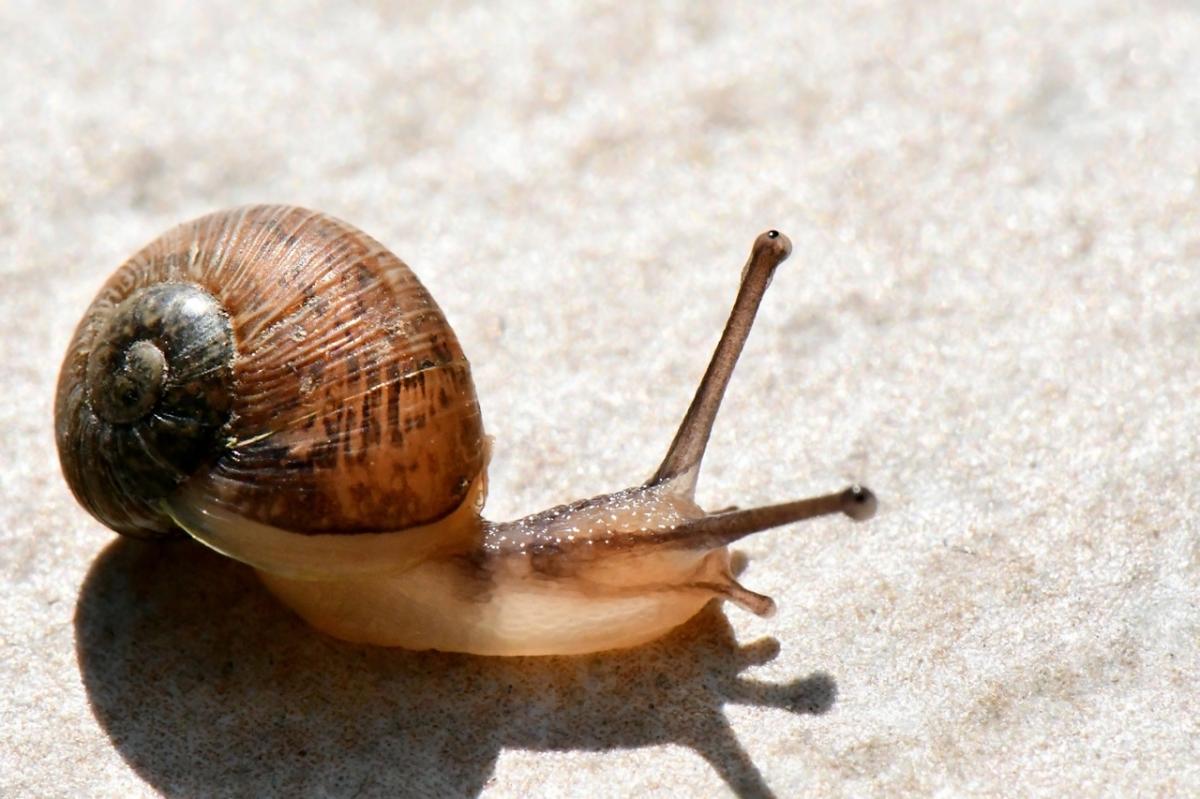
Both snails and slugs are animals that come out in the rainy season. It is not that they constitute a plague as such for cacti, but due to their voracity it is necessary to keep them away from plants.
They feed on all parts of the cactus, regardless of whether they have spines or not. So you have to be aware.
Damage
The Cactus will present more or less deep bites anywhere on your body. If the plant in question is small, it could even "disappear" overnight, leaving only the thorns.
Transmission
The best treatment is prevention. Protect your plants by making them a kind of greenhouse with mosquito netting or wire mesh with very small holes (like the one used for fencing or in chicken coops).
If you find a snail or slug, take it as far as possible from your plants, at least 40 meters from where they are.
In the event that there are already some for your cacti, you can treat them with molluscicides (be careful if you have cats and / or dogs, as it is toxic for them), or with vinegar. On this article You have more information.
Mealybugs
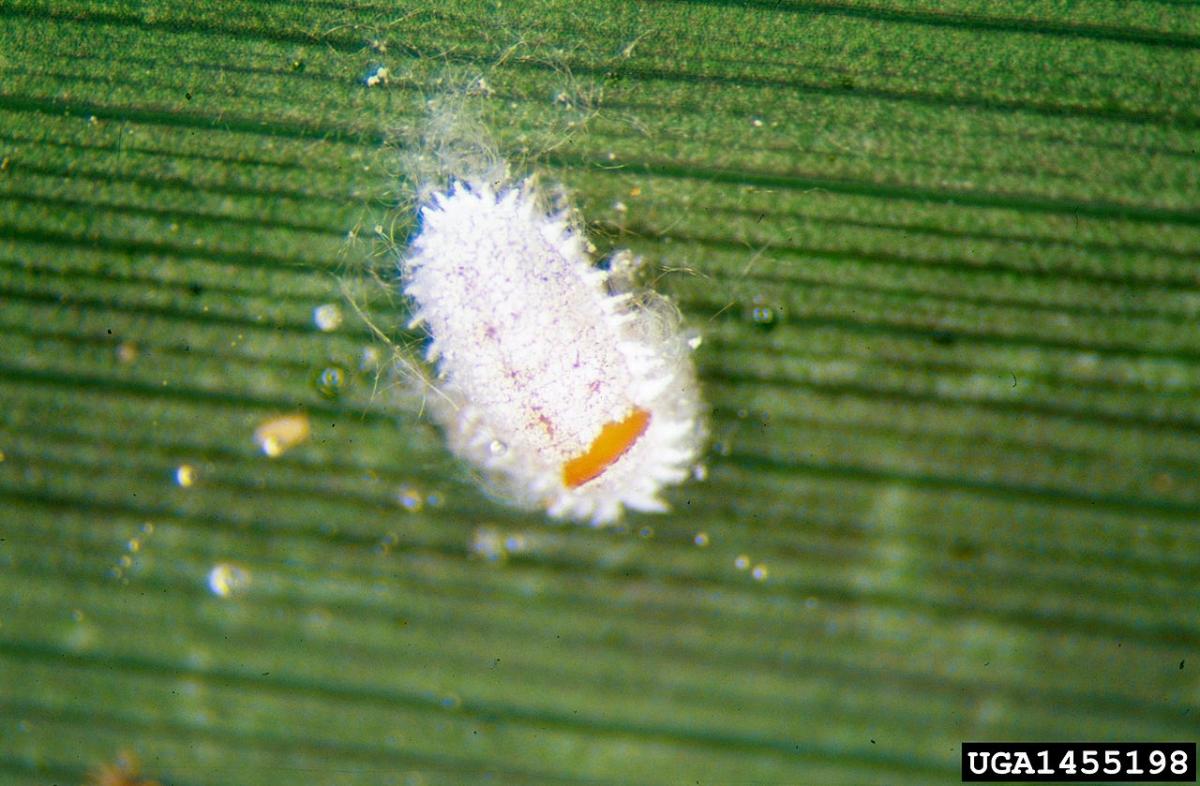
Image - Wikimedia / Whitney Cranshaw
They are the main and worst pest that cacti can have, especially if they are being cultivated in hot or temperate-warm climates such as in the Mediterranean region. There are of many types, but those that most attack our favorite plants are above all three: the cottony one, which has a rounded shape and is white in color; shield mealybugs, which are those with a hardened brownish carapace; and those that are like limpets, like the San José louse, brown-gray in color.
All of them proliferate during the hot and dry months of the year, so that it is during the summer when we will see them most. But it will not hurt to be a little pending in spring if we live in a warm area, since in these places it is normal for them to start their activity long before the summer season arrives.
Damage
These insects they feed on the sap of cacti, with which they lose strength and health. Also, where they are, the plants lose color. If the situation continues for a long time, there may be so many mealybugs that even the life of the cactus would be in serious danger.
Transmission
From my own experience, the best treatment, due to its rapid effectiveness and because it is a natural product, is diatomaceous earth (on sale here). This has an appearance of white powder that what it does is pierce the body of the insect, in this case the mealybug, causing it to die of dehydration.
But of course there are other ways to eradicate them:
- With water and neutral soap: Use a small brush to clean the cactus, thus preventing you from hurting yourself.
- Chemical insecticidesChemical anti-mealybugs can be very useful, but use them according to the instructions for use.
- Permethrin: they are natural insecticides. They are useful when the plague has not spread.
Black weevil or weevil
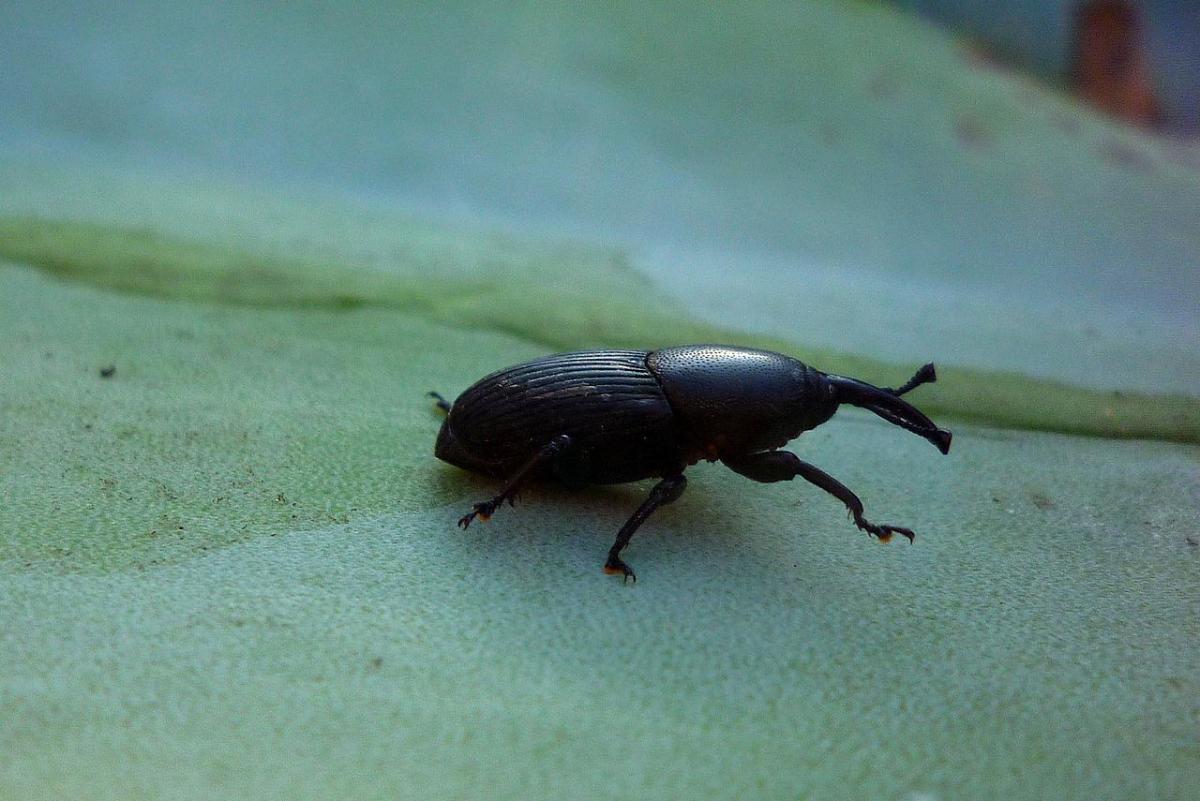
Image - Wikimedia / Nanosanchez
The black weevil of the agaves (Scyphophorus acupunctatus), as this is more known, It is a weevil whose appetite in the larval stage causes serious damage, not only in agaves, but also in many cacti.
The female lays the eggs inside the plant, reaching it through a wound. Then these hatch, and feed on the cactus. Over time, it weakens.
Damage
At first it is a bit difficult to see, as the cactus may be apparently fine. But we can realize that its stems are losing firmness, or they fall off.
Transmission
The treatment consists of applying insecticides such as chlorpyrifos to cacti in spring and summer. If we know that the plague has reached the area, it will be highly recommended to treat them for one month with this insecticide and the following month with imidacloprid.
Aphids
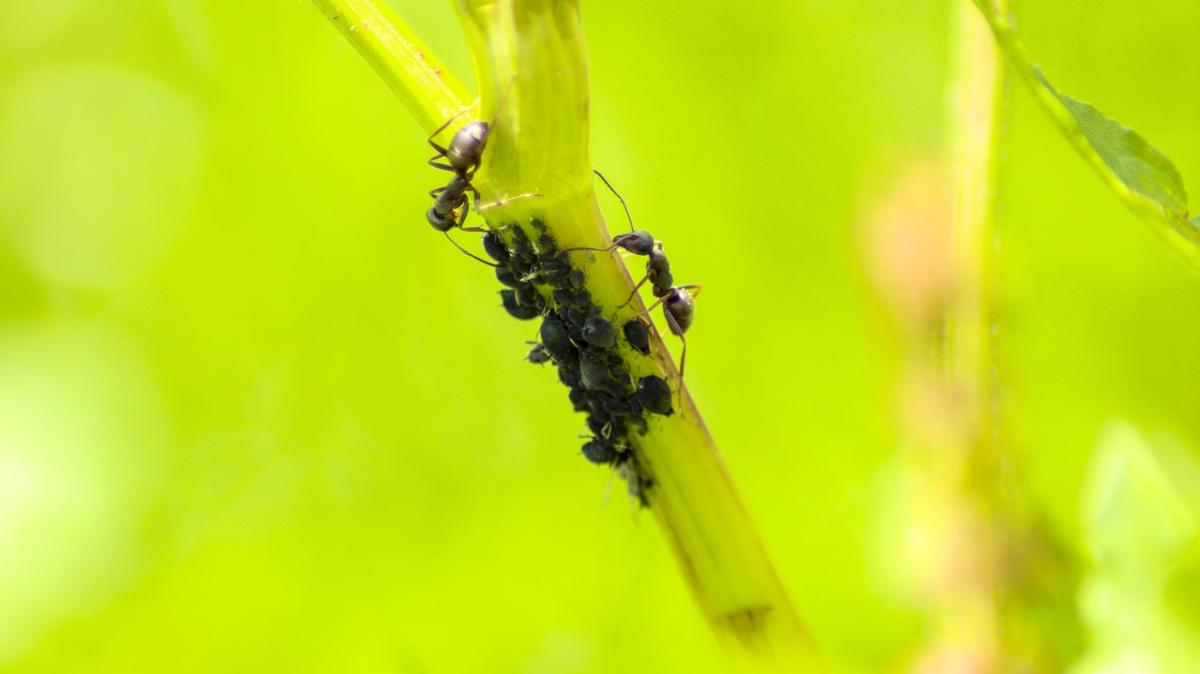
Aphids o aphids they are very small insects, about 0,5 centimeters or less, which like the mealybugs are favored by the heat and, also, the dryness of the environment. It must be said that in cacti they are a rare pest, in succulents they are more visible. But we have also wanted to include it since they feed on the sap, specifically the flower buds and the most tender parts of the plants.
Their body can be brown, green, reddish, or even black, and can be recognized by their two long antennae. They often establish symbiotic relationships with ants, since aphids secrete a honeydew that they like.
Damage
In cactus the damages we will see in the flower buds more than anything. These will remain closed, as it will be impossible for them to open because aphids will prevent it. As a consequence, the plants will have wasted energy and resources to produce flowers to no avail.
Transmission
If you are looking for a natural remedy, we recommend you look to get ladybugs. They are natural predators of aphids, and they are also very beneficial for the garden as they also pollinate flowers.
Other ways to eliminate them is with insecticides such as diatomaceous earth, or other chemicals such as anti-aphids (for sale here).
Mulch fly
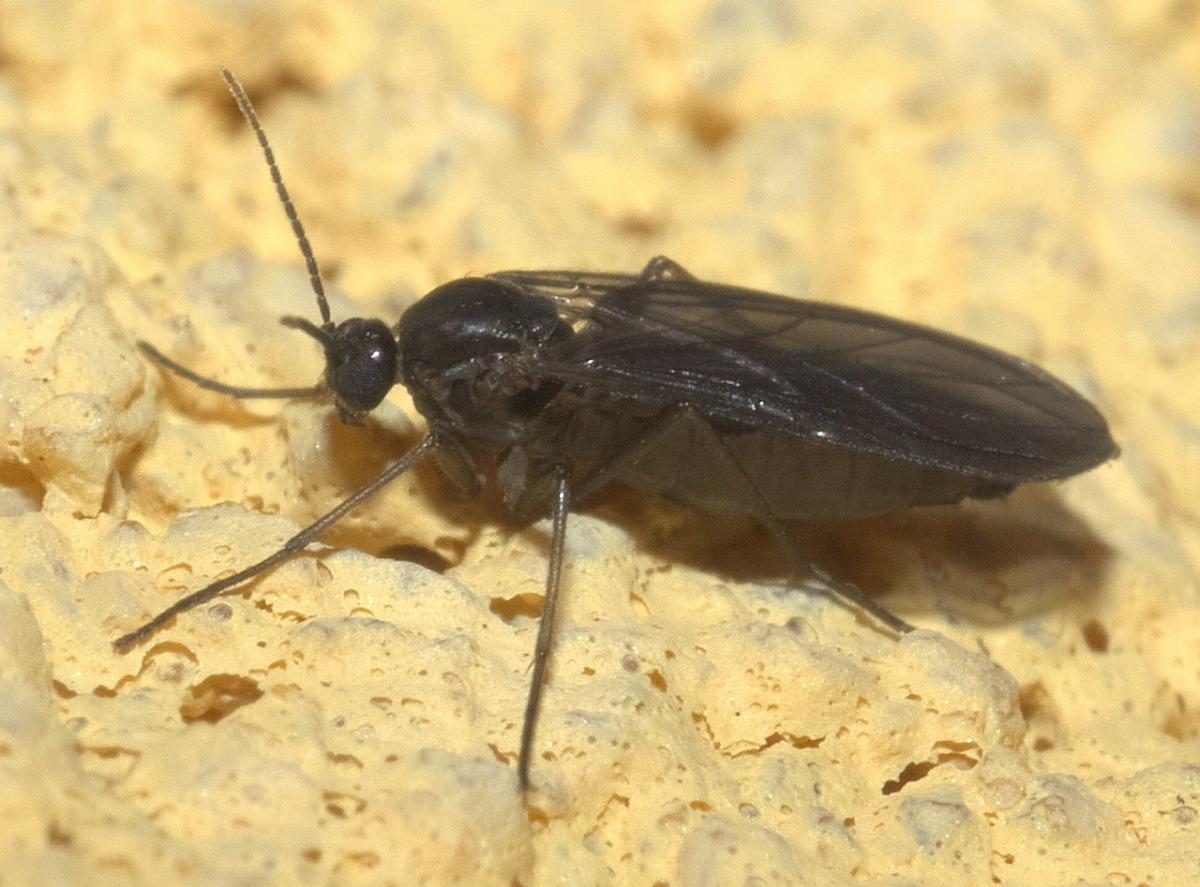
Image - Wikimedia / xpda
La mulch fly It is a very common insect in plants that are grown in pots, and especially with soil that remains moist for a long time. It belongs to the Sciaridae family, and his body is black, which is why it is also known as black fly.
This can be seen at any time of the year, but it likes spring and summer best because it is when the eggs are deposited on the ground and can hatch.
Damage
The adult specimens do not cause damage, beyond depositing the eggs. But instead the larvae feed on the tender parts of the cactus that are under the surface of the substrate; that is to say, of the roots. Therefore, the plant will slow down its growth and could become very weak.
Transmission
There are several remedies you can use to eliminate the mulch fly infestation. For example, you can put yellow sticky traps (on sale here) near cacti, or treat them with neem oil. Another option is to introduce cinnamon cloves into the substrate, or place chopped citrus peels (lemon, orange, etc.) on top.
Trips
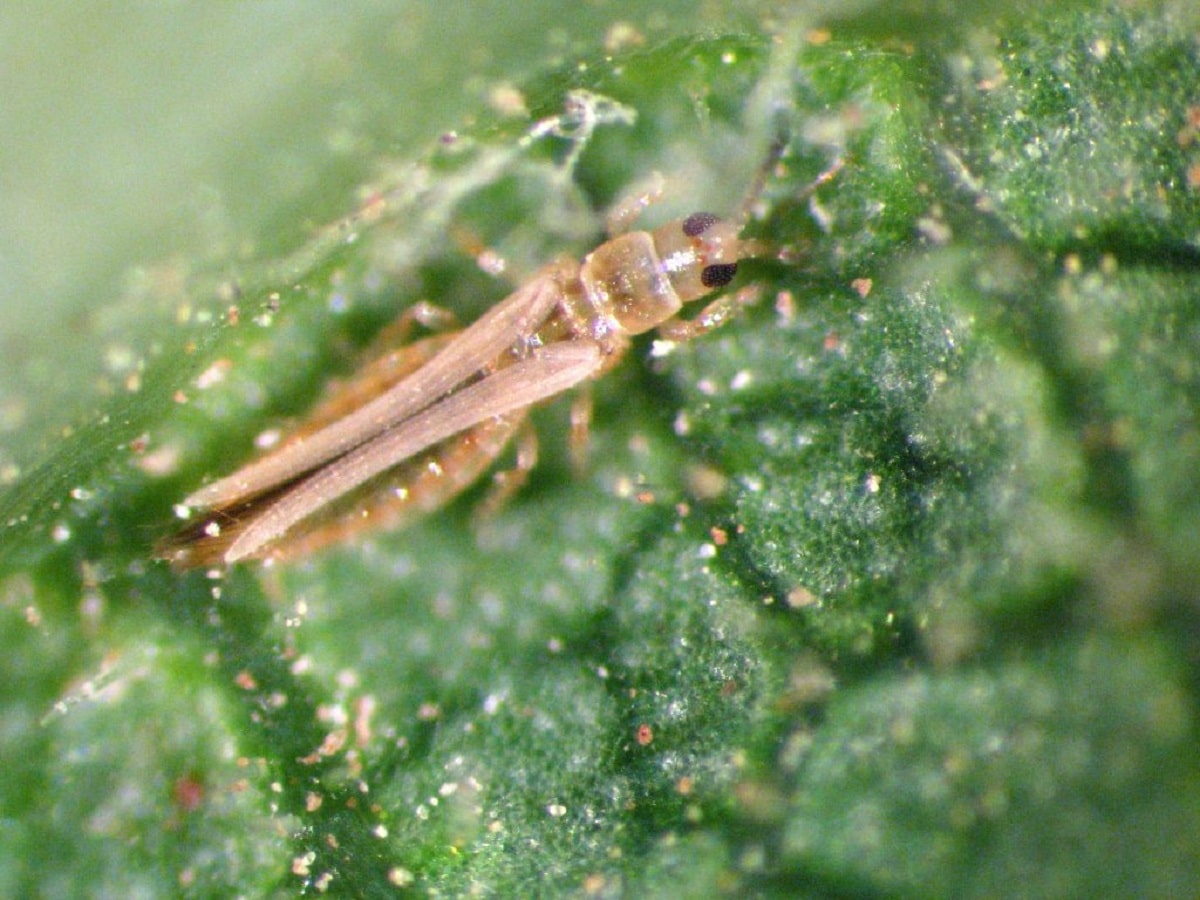
The trips they are like earwigs but much smaller, about 2 millimeters in length. It is a common pest of plants grown in greenhouses and outdoors, and its activity grows during the spring and summer.
Like aphids, we will not see them much in cacti either, as they have a predilection for plants with leaves. Now, they can also damage flowers by feeding on their sap.
Damage
The same as those that cause aphids; this is: flower buds that do not open and fall, and bad-looking petals.
Transmission
To eliminate thrips you can resort to insecticides like potassium soap or neem oil. But you should also know that you have the option of cleaning the flower buds with soap and water.
We hope it has been useful to you and you can identify the plague of your cacti.